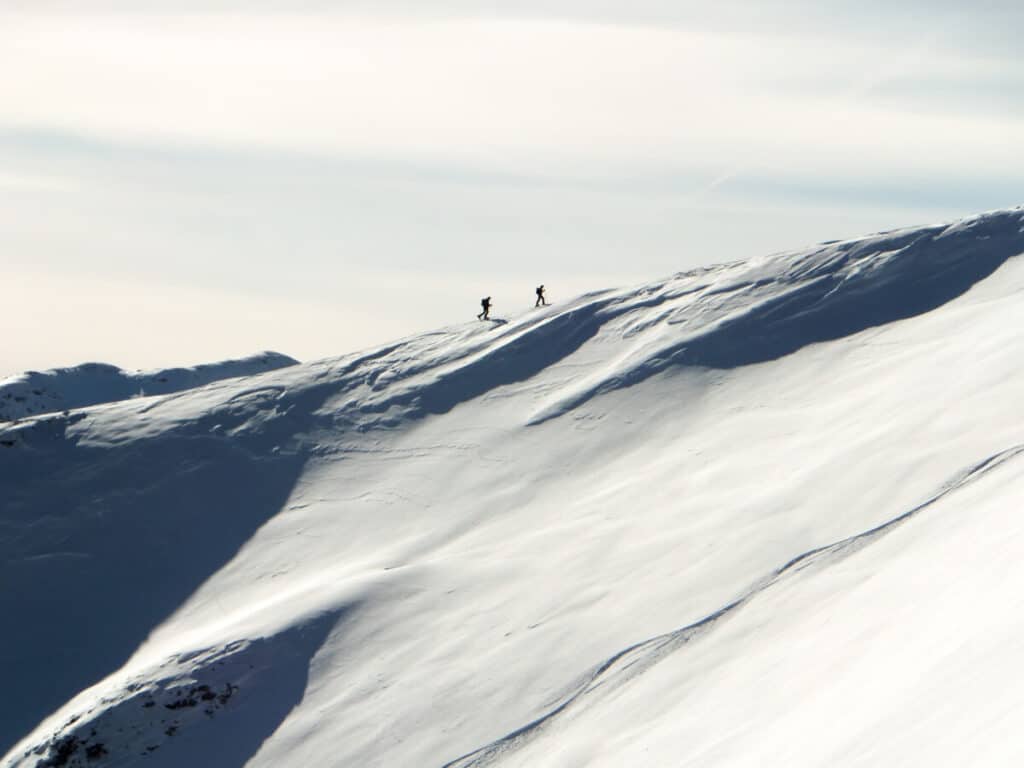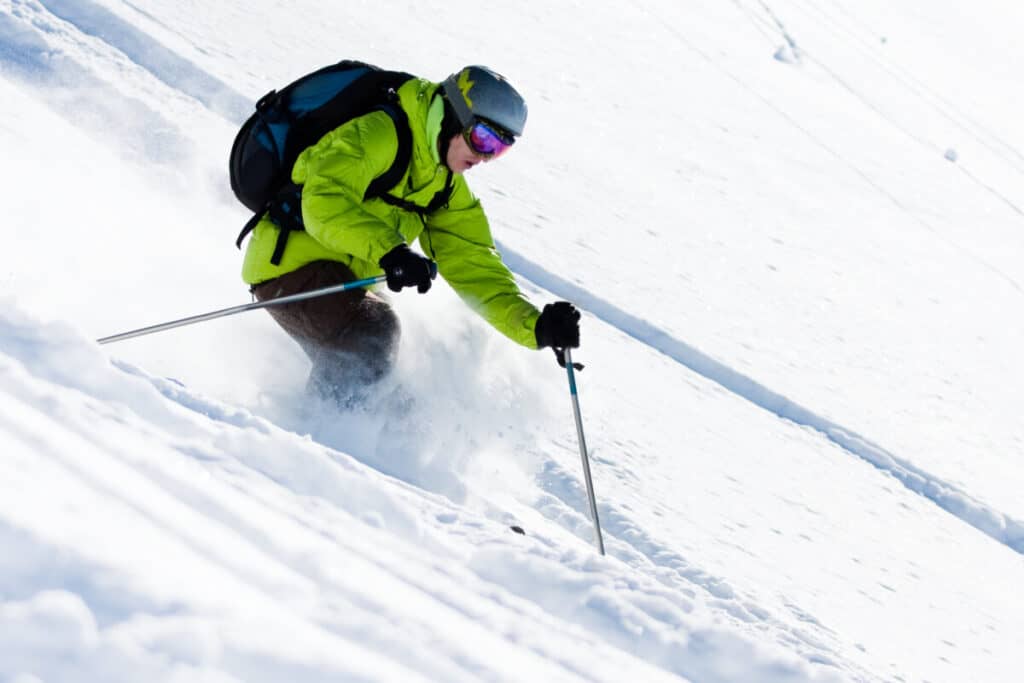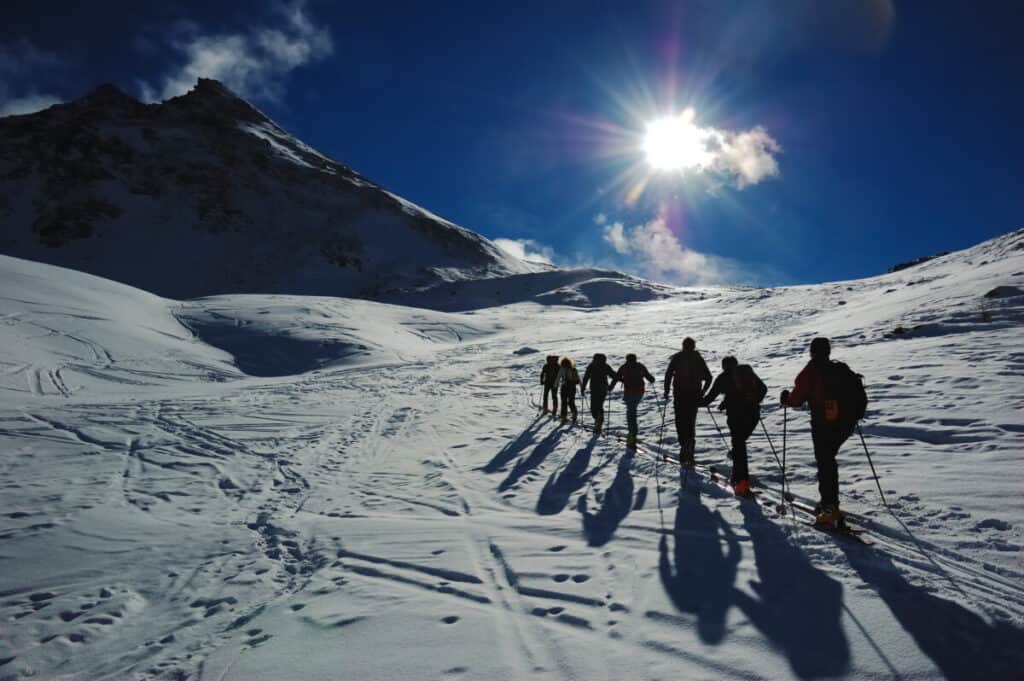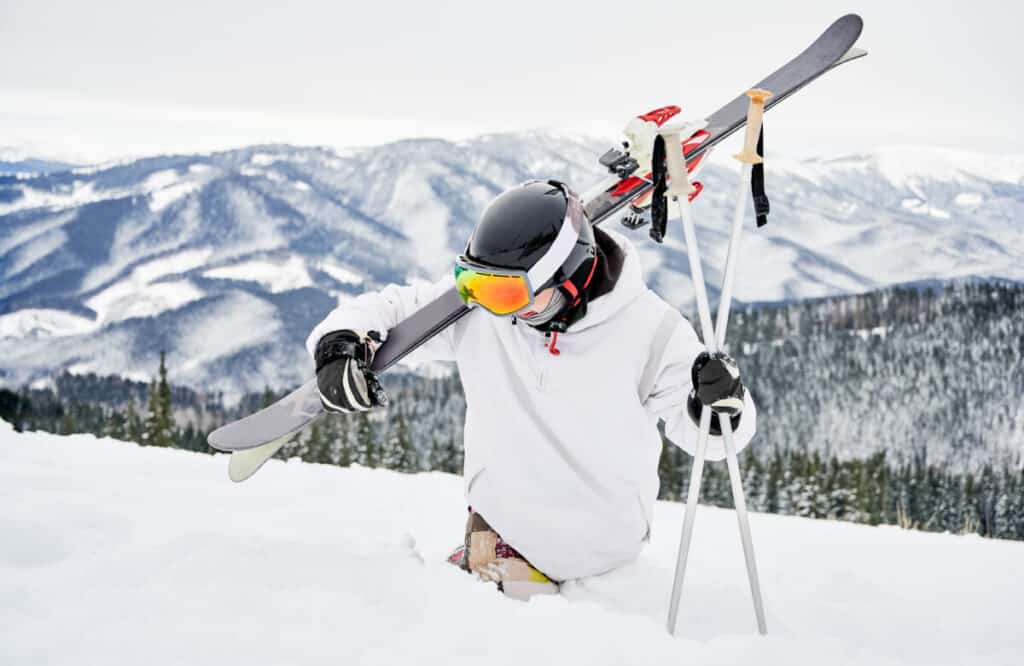
Over the last few years, there has been a significant rise in the number of skiers heading into the backcountry. Rising lift ticket prices, COVID, and general interest all factor into this fast growing trend. Backcountry skiing is highly addictive. More and more enthusiasts are discovering that earning turns in the backcountry can be even more exhilarating than resort skiing. The endorphins released during strenuous uphill travel combined with the adrenaline high from downhill turns all while saturated in isolated winter mountain bliss stimulates the inclination to bag the resort and return to the backcountry.
Many skiers find that you don’t have to peak bag or hunt steep angle pow to frequent the backcountry. Significant avalanche dangers lurk on steep slopes with weak layers in the snowpack. Mitigating avalanche danger by traversing slope angled terrain of less than 30° opens the mountains to those who wish to enjoy the backcountry while assuming less risk.
Why do Backcountry Skiers Say, “If the Snowpack is Unsturdy, Keep it Under 30°”?
There is a maximum breakpoint at which the snowpack on a given slope can sustain the shear force of an additional stress load. Sometimes, the snowpack’s stress load (determined by its weakest layer) is at near maximum capacity. A skier carving turns, or the accumulation of additional snow can cause failure in the weak layer which can then propagate into an avalanche. This breakpoint is highly variable and is extremely difficult to gauge. It is one of the most significant dangers of backcountry skiing.
Generally, the snowpack on slope angles less than 30° has a far less chance of sliding than on slope angles 30° or more. Studies show that approximately 3% of avalanches occur on slope angles less than 30°. An additional 8% of avalanches occur on slope angles between 30°–34°. A scary 76% of avalanches occur on slope angles between 34°–45°, 10% occur on slopes 45°–50° and 3% occur on slope angles 50° or more.
With proper route planning, avalanche dangers can be mitigated by planning, touring and skiing slope angle routes that are less than 30°. Route planning tools, such as CalTopo, provide extremely useful slope shading topo maps that can be used for route planning. It is important to consider the terrain above and below a given route to determine if a given route is adjacent to avalanche terrain or located within an avalanche runoff path.
This doesn’t mean the avalanche danger is altogether non-existent on these slopes, it just means that slope angles of less than 30° have a lower propensity to fail (only 3 times out of a 100 is still 3 times).
Slopes less than 30° Can Still Be “Black Diamond” Level Challenging.

Staying under 30° in the backcountry doesn’t mean you’ll be isolated to the bunny hill. There are fun and challenging routes to be had while mitigating risk by staying under 30°.
At the ski resort, slope angles for Beginners or Novice (green circle) skiers are generally between 5° and 12°. Intermediate (blue square) runs are between 12° and 22°, Advanced (black diamond+) are 22°+.
That being said, it is important to understand that mitigating risk in the backcountry is much more involved than choosing between green, blue and black. Don’t assume for a minute that because a chosen route seems to appear to be entirely under 30°, there’s no risk.
Slope angle is just one of the factors to consider when route planning.
The Importance of Risk Mitigation When Backcountry Skiing Low Angles
Backcountry skiing low angles does not alleviate the need for a skier to be risk aware. Quite the contrary. Knowing how to evaluate snowpack conditions, plan, tour, ski and rescue in avalanche regions regardless of the slope angle is at the core of mitigating risk. It is essential to be adept at avalanche risk assessment and rescue. It is also important to closely monitor weather and avalanche forecasts, to travel with a group or partner who shares similar risk tolerances and to be equipped with proper gear.
Learn How to Assess Avalanche Risk by Taking the AIARE Level1 Course
The American Institute for Avalanche Research and Education offers a 3 day 24 hour training (AIARE 1) that provides a crash course on avalanche risk assessment. The course teaches how to assess snowpack, how to identify conditions that impact avalanche risk, how to route plan, how to identify anchors in slope terrain that may provide stability or be a source of caution, how to respond and recover a victim in an avalanche situation, how to organize a touring group, how to use and operate a rescue beacon, etc. Their website is avtraining.org and you can find the closest AIARE Level 1 course near you.
I personally think this course should be a required prerequisite for anyone and everyone who ventures in the backcountry regardless of skill set or slope objective. I consider the AIARE 1 course as Driver’s Ed. It’s required before obtaining a driver’s license. No one, regardless of how much experience they already have driving, is legally able to drive until they’ve taken Driver’s Ed and passed the test. Those who take Drivers Ed and pass the test, in essence, acknowledge understanding and comprehension of the driving laws and standards established to enhance safe driving conditions.
Similarly, the AIARE 1 course sets a fundamental foundation to enable members of the backcountry community to be on the same page when planning objectives and routes, assessing avalanche conditions, making inroute decisions, and responding to avalanche situations.
Head Into the Backcountry with the Like-Minded Low Angle Skiers

Members of the backcountry community often pair up with other enthusiasts according to similar shared risk tolerances and objectives. Touring and skiing in the backcountry with a like minded group can alleviate a lot of conflicting decision making issues that can arise. For example, if a member of a group successfully persuades other members to change the original destination objective in order to tour and ski a more aggressive line, not only would the more aggressive line not be part of the original plan, it may also exceed the comfort level of some of the other skiers. This in turn, could raise anxiety and/or tension within the group and cause additional unplanned decisions to be apprehensively made.
Skiing Off Piste Additional Risks: Getting Stranding in Deep Snow Really Sucks

Avalanche danger is just one of the risks associated with skiing off piste. A plethora of things can go wrong in the backcountry. For example, an accident, injury, technical gear issue, or a wildlife encounter could potentially have serious repercussions if one were to be stranded alone miles deep in the backcountry. It is important to always ski with a partner or group even in low angle terrain.
Create a group plan with designated route alternatives and stick with it. Things are more likely to go wrong if decisions are made that deviate from the designated plan.
Backcountry skiing low angle slopes can certainly open the mountains to many lower risk enthusiasts. However, the risks still exist and they are significant. If you are new to backcountry skiing and would like to learn more, click on my page here for more information on how to get started.
Also, these additional website have amazing resources that you will be sure to use and rely on for planning your backcountry sessions.
Avalance Institute for Avalanche Research (AIARE)
Avalanche safety tools: Avalanche.org, Know Before You Go
Route planning tools: Caltopo, Google Earth, GAIA GPS,